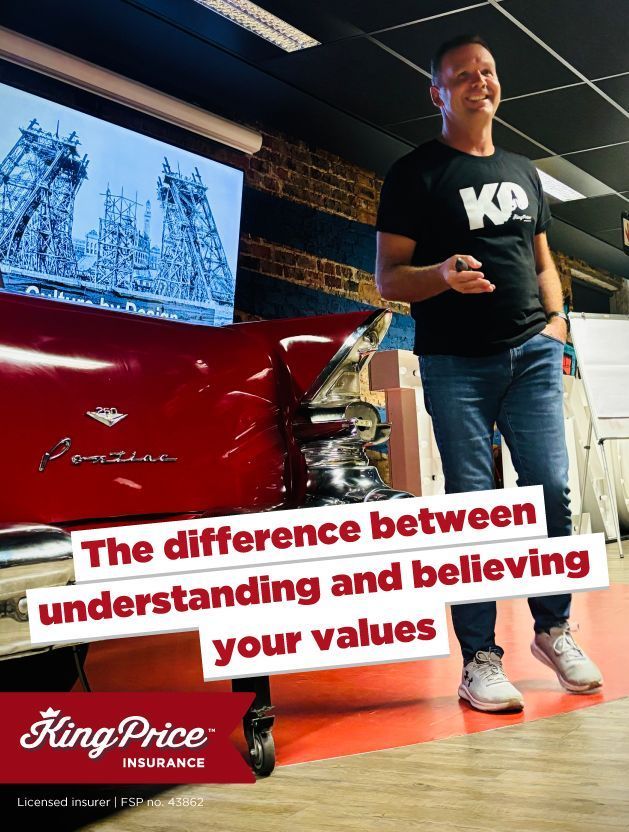Induction Process

When ‘newbies’ join our royal family they honestly think we’re the coolest company on the planet because playing with Lego is an important part of our induction process. What they don’t realise at first is that by asking them to physically build our 4 family values – customer is king; suit up superhero; stronger together; and fun with a little madness – we’re encouraging them to discuss and agree on an understanding of our values. In the process, they unpack their individual belief systems around the values and it’s these beliefs that end up driving their behaviour. So, the sooner we can align their beliefs, the sooner we can create unified behaviour that brings our values to life.
(Sneaky né!)
You might be asking where culture fits into the process. Well, put 1 way, behaviour IS culture. Put another way, culture is how we do everything… From the way we greet each other in the morning, to the way we make decisions, to the way we treat our clients and business partners.
Let’s take everyone’s favourite King Price value as an example: Fun with a little madness. Some employees believe this means that work should be fun. (And it should!) Others believe that they come to work solely to have fun, and don’t understand why they would get disciplined for playing video games all day. In both cases, the employees understand the value in theory but their different belief systems drive different behaviour.
It’s even possible that an organisation’s prevalent belief systems will ‘allow’ behaviour that isn’t aligned with its values. The reality is that under pressure (and who isn’t under pressure these days!) people tend to revert to their belief system rather than their understanding of a value.
It’s incredibly important for the culture ambassadors in organisations to be aware of beliefs that are driving behaviour that goes against their values, and to intervene timeously. If, as an example, a call centre agent is focused on making a sale at the expense of listening to a client’s needs, then it may be necessary to upskill that agent to listen better, and training may become the next step in aligning the agent’s belief about what ‘customer is king’ means as a value.
Essentially, a company’s vision determines its values. Employees’ belief systems about these values determine their behaviour. How employees – from the CEO to the clerks – behave is a company’s culture in action. If this manifestation of the culture isn’t what’s outlined in your culture blueprint, then you need to address the belief systems to change the behaviour. And if that sounds a little complex (because it is) I’m making a short video about it soon. Stay posted.
Our Lates Articles

See you in person
Menlyn Corporate Park, Cnr. Garstfontein Rd. & Corobay Ave. Waterkloof Glen, Pretoria, Gauteng 0181, South Africa
All Rights Reserved | VerdanTech


